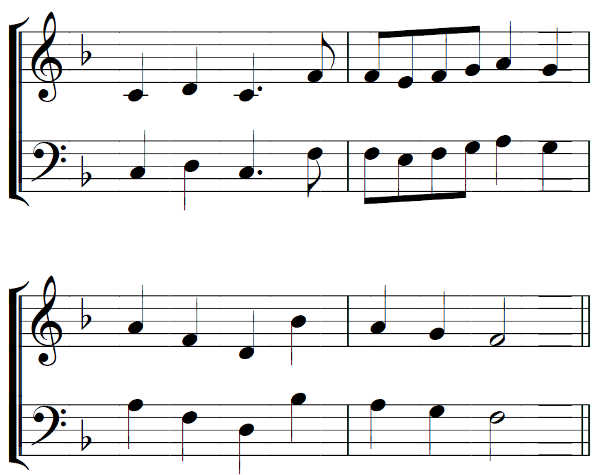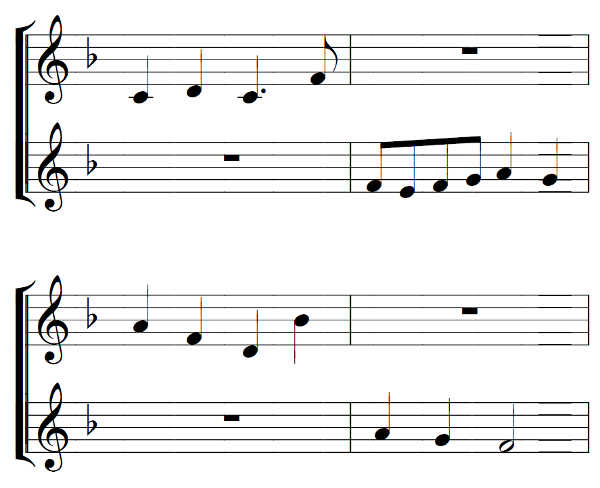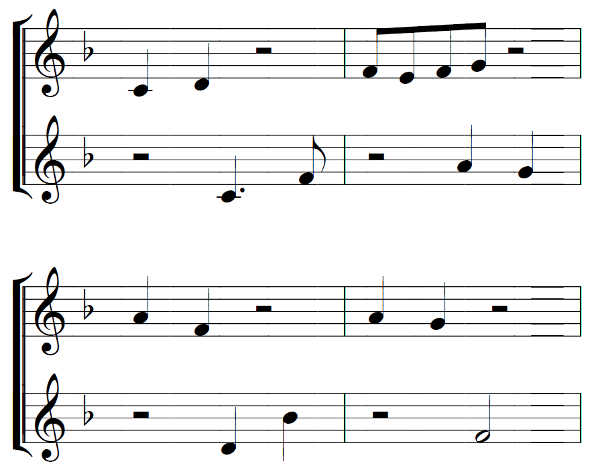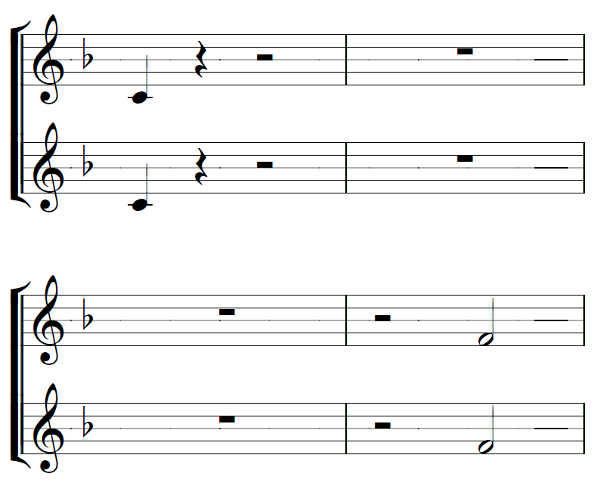Warm Ups
Choral warm ups are recommended at the beginning of a rehearsal as the vocal cords, like any other muscles, fare better if not put under a lot of strain without having a little period for limbering up. Nowadays, some choirs spend a lengthy period going through a series of arduous exercises whereas, fifty years ago, most would have sung through a piece they knew and then considered themselves ready. For choirs with limited rehearsal opportunities, or with adult members who are restless
during such procedures, a compromise is advised.
Singing through a known hymn tune (in unison) at a pitch comfortable for everyone (see HERE for an explanation of this)
is a good starting place. Something like Cwym Rhondda in F major.

Just singing this through in unison (with or without words) can lead to a number of addtional exercises, such as:
- Starting, stopping together;
- Singing the whole melody in four breaths, then two breaths, then one;
- Singing unaccompanied without losing pitch.
Divided into two groups, the choir can sing alternate bars (which promotes coming in after rests without scooping {which is a function of the inner ear and imagination}) and often leads to some amusement.

This can be done at two beat or even one beat intervals.

Another tactic which leads to some amusement is for everyone to sing the first and last notes of the melody or a section and, in the gap, try to imagine the music going on. Something like:

If this is conducted, there is usually an amusing cluster at the end. But it helps to develop the inner ear and can lead to some discussion about this.
This becomes even more amusing if the beat isn't conducted, as the final cluster is spread across several seconds. (So then it's time to discuss a steady sense of beat and time.)
Most amateur choirs can benefit from chanting a known text (Happy Birthday?, a Christmas Carol?) on a monotone to practise maintaining pitch. It can help their listening if they do this against
a held or repeated tone a fifth, a major third, a major second etc above or below.
Many choirs visibly brighten if they can manage to chant an unaccompanied perfect fifth for a while. If they have become used to their own mistuning, or even hearing the narrowed fifths of equal temperament, they
are struct by the ringing purity of the sound.
RETURN TO
MENU - The Conductor's Toolkit
MENU - Organists Online